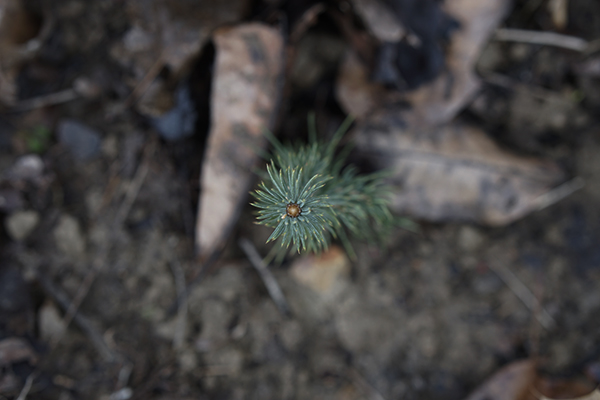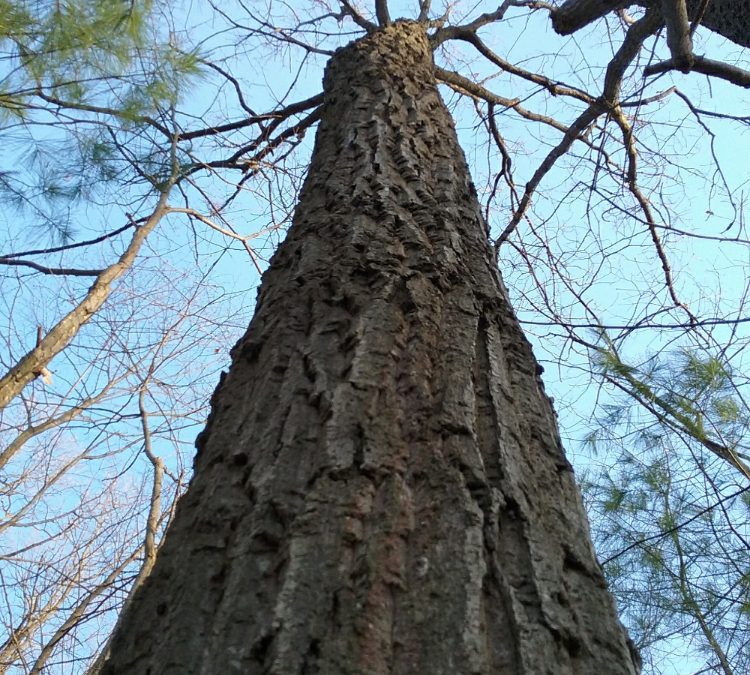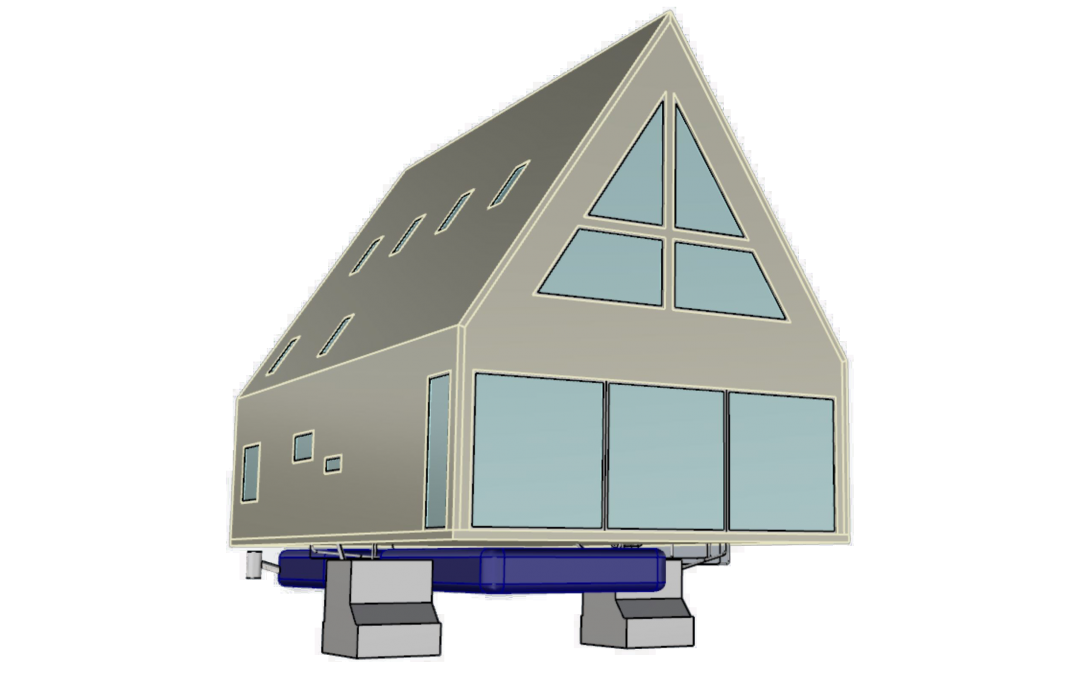
by William | Apr 21, 2021 | Healthy Living
Dear Readers,
On a rainy, rather dismal and slightly chilly day in early April, fifty little sprouts found a new home on my parents’ property.
Colorado Blue Spruces and Norway Spruces pricked and prodded the fingertips of those who set them upright in the soil.
Northern White Cedars, absolutely delectable to wandering deer, were placed in dirt and behind bars for their own good.
The shrubbery of American Hazelnut and Pink Lady Winterberry dug their roots amongst trees, in the hope of aiding a variety of wildlife.
Of the fifty trees and shrubs my lovely mother bought from our county’s Conservation District, a few may have been inadvertently left strewn about the forest floor…we had many pairs of happy hands helping us plant that day. One pair of hands, in particular, was so ecstatically determined that they resolved to carry random sprouts about in their arms…not gently, mind you. At least, not ‘gentle’ in the sense that they recognized they were holding something fragile. Perhaps more ‘gentle’ in the recognition that they held something important, and in a 6-year old enthusiasm, it was something fun and grand to be a part of.
We did not take any photos of the process of planting~ we were having too much fun planting! Well, and attempting to finish before sunset.
But, if you were to have arrived on my parents’ property at just the right moment…

by William | Apr 14, 2021 | Small Footprint
Dear Readers,
I love trees. I love how tall and expansive they can grow. I love how their roots entangle and wrap and twist over just about whatever they gosh darn please. I love the feeling of their bark. I love the feeling of humility they inspire.
Trees are good. And I want to get to know every single one of them on our property. Where they are located, what kind they are, how healthy they are, how old they are…it’s just too bad I’m so awful at it.
The first area I fail at is locating them. If I can’t locate them…I can’t protect them.
William and I want to geolocate trees on our property, and then transfer their coordinates to a site plan. More specifically, we want to locate trees that are at risk of having to be removed during our build. From our anticipated driveway, to our home’s exact footprint, there are certain trees, that if possible, we want to avoid touching entirely (like this absolutely beautiful American Beech tree…and this really cool grouping of Red Oaks).

by William | Apr 7, 2021 | Net Zero
Dear Readers,
This whole mulch basin idea may actually work. Especially if we combine it with the pre-established genius of the Clivus Multrum composting tank design!
How it would work:
Kitchen and laundry wastewater will be directed to an inclined mulch basin. The incline will allow the effluent to gradually and evenly filter through the mulch and to the bottom. This would be an aerated decomposition process, as there will be a constant fan allowing ventilation to the basin, and there will also be aerobic organisms helping to break up and decompose the organic matter (noms..grease!). The water filtered to the bottom of the holding tank will be pumped to the indoor greywater garden wall.
I would like to find a way to aerate the filtered water at the bottom of the holding tank. A way to keep it from becoming stagnant will be helpful.
This entire process will occur below our home, but still within the home’s envelope so to ensure proper function during colder months. The two Clivus Multrum composting toilet systems beneath our home will be maintained the same way~ both contained within the home’s envelope. Remember the blog about The Seed looking like Baba Yaga’s hut? Welp, it may have three chicken legs now instead of two…so I don’t know what fairytale creature/structure it will now resemble…maybe a hodgepodge.
Because we are aiming to achieve Living Building Challenge certification, we will be (and already are..) highly conscientious of what goes down our drains. Anything that could disrupt the filtration processes will be avoided (such as yucky chemicals).

by William | Mar 24, 2021 | Prefabrication
Dear Readers,
With a majority of our previous Home Building Curiosities, I introduced noble home builders according to how they were meeting the five main principles that William and I are setting for ourselves: Passive House, Net Zero, Prefabrication, Small Footprint, and Healthy Living. For The BLOCK Project, I’m going to scratch all of that, and just jump straight into telling you how awesome they are.
The mission of Facing Homelessness, through The BLOCK Project, is to put a 128 square foot Living Building Challenge certified home on every residential block in Seattle~ and have someone experiencing homelessness live in it.
I know I have said it multiple times (outside of this blog), but how they achieve this feat still continues to put me in a state of humbled ‘awe’: They do what they do by revealing the incredible capacity that we as humans have to love and to be loved. You can see this tremendous power of love in every stage of the home~ from how it started, to it becoming somebody’s safe haven.
The Idea’s Beginning
About a decade ago, Rex Hohlbein began inviting people living on the street into his architecture office. He spoke with them. Shared cups of tea. Let them have a dry, safe place to hang out for the day while he made phone calls and worked on clients’ projects. He let them experience a sense of ‘normalcy.’ Most of all, he created a space where the reality of their equality was felt, and their humanity normalized.

by William | Mar 17, 2021 | Net Zero
Dear Readers,
As much as I believe Baba Yaga is a complex, terrifying, and intrinsically beautiful character in Russian fairy tales…I don’t necessarily want our home to look like her hut. And the two Clivus Multrum composting tanks do exactly that…they make The Seed look like it has two chicken feet.
The conundrum:
The U.S. designs of the Clivus Multrum are tall. In the design above, we have two M2 models of the Clivus Multrum. They are each designed for an average of 15 daily uses, and to accommodate three people. They each are between 6.5 and 7 feet high, and that height does not include the required 12’’ of extra space above the tank for ventilation equipment. These compost holding tanks will also be enclosed in the home’s envelope, and therefore would require additional height allowances.
The height becomes a problem due to the fact that William and I want to avoid digging. For prefabrication purposes, it is easier if we do not have to dig in order to install the tanks. For our own personal purposes, we simply want to avoid disrupting the natural soils on our land as much as possible.
Two Possible Solutions:
One, we could go Aussie. The Australian versions of the Clivus Multrum are significantly lower in height. A CM10 model is designed for an average of 25 daily uses, and is only 3.6 feet high. While the Australian version is certified to Australian and New Zealand wastewater treatment standards by SAI Global…they are not NSF certified. From my little research into PA DEP code, only NSF certified wastewater treatment products will be considered as acceptable.





